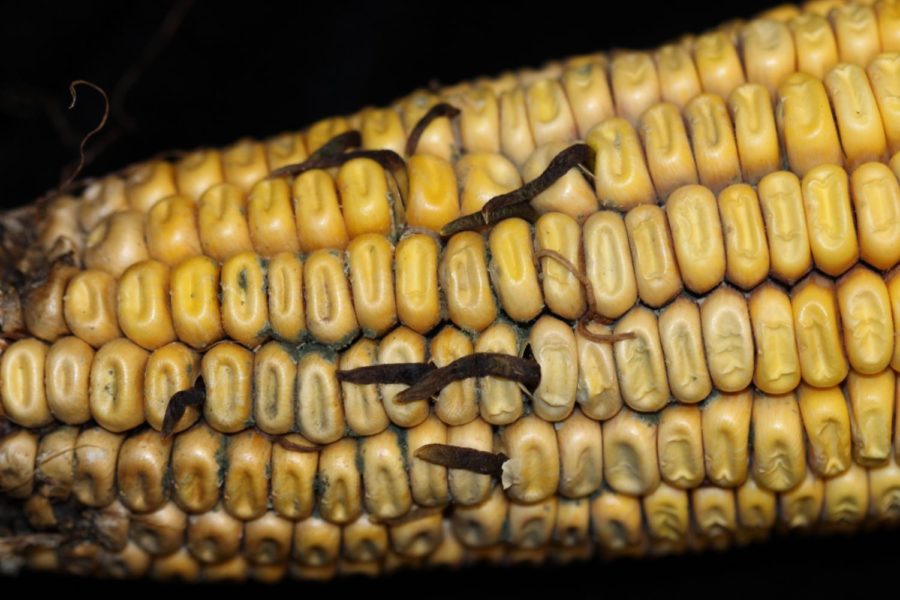Crop flooding: Extra moisture heightening crop disease risk and lowering yields
Excess moisture has lead to mold and sprouting on corn crops.
September 15, 2018
Increased crop disease and lowered yields are concerns within the 2018 corn and soybean crop, two Iowa State professors said.
The growing season has been ahead of schedule which has caused crops to mature earlier. A faster growing season may give way to issues with moisture, such as mold and sprouting on ears of corn.
“Crop progress was about a week or 10 days ahead of schedule for many places,” said Andrew Vanloocke, assistant professor of agronomy.
Although hard to prevent, farmers can help themselves by harvesting fields affected by ear sprouting and various ear molds first, said Mark Licht, assistant professor of agronomy and extension cropping systems specialist with Iowa State University Extension and Outreach.
Due to this year’s crop concerns and early maturity, Vanloocke said harvest seems to be slightly ahead of schedule.
This could change as Iowa is going through a statewide dry period that will help crops get back on their regular schedule.
“By this weekend, it is going to be pretty common to see combines … if next week is dry we will be full swing on harvest,” Licht said.
Harvest time typically begins around Sept. 20, which appears to be on track this year. Due to the early maturity of the crops, harvest also may be completed in a shorter time frame.
Preferred harvest moisture levels vary between farmers and drying capacities. These numbers are on the rise over the years in a trend Licht calls “harvesting wetter.”
Licht said, under forced air, we can look at moisture levels at about 18 percent, stirrers at 20 percent and with new technology up to 25 percent moisture.
“Harvesting wetter” allows less kernel loss from blowing off combines, giving farmers better yields.
Bill Steck is a farmer who lives near Burlington, Iowa and runs a corn and soybean operation. He said he is on track to begin harvest Sept. 18 as long as moisture levels are at about 21 percent.
Vanloocke, Licht and Steck all said crop numbers this year will be lower than previous harvests.
“Driving around the state this summer, our crop doesn’t look as it looked last year or two years ago. Both of those years were good crop years,” Licht said.
Moisture levels in Iowa have varied across central and northern regions, while the southern part of the state experienced drought.
“It will be a tale of two states for this year,” Vanloocke said.
Due to the significant amounts of rain early in the growing season, kernels may not have adequate nitrogen. This will cause the kernels to be lighter and lead to yield loss, Licht said.
“We are probably going to see lighter kernels this year than we have seen in past years, and that’s where I think that yield loss is really going to come from,” Licht said.
Due to ear molds and rots seen, farmers need to physically inspect and scout their fields to see plant integrity and schedule what fields need to be harvested first.
“How severe are the ear molds and rots?” Licht said. “What does that plant integrity look like? I think this year more than others we need to use that to schedule harvesting.”
These crops with issues also need to be dried as soon as they are removed from the field.
Checking crops from removal of the field to delivery to the co-op seems to be farmers best bet on giving their best effort to maximize quality and yields, Licht said.
















